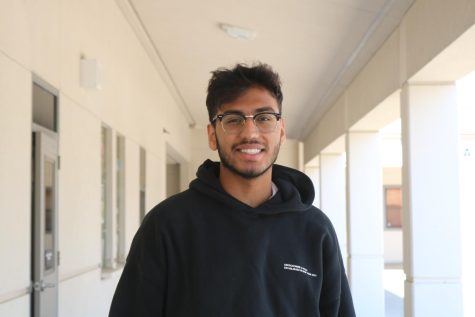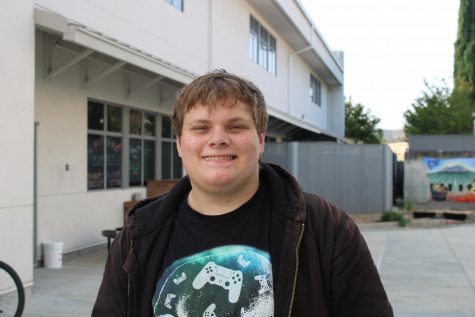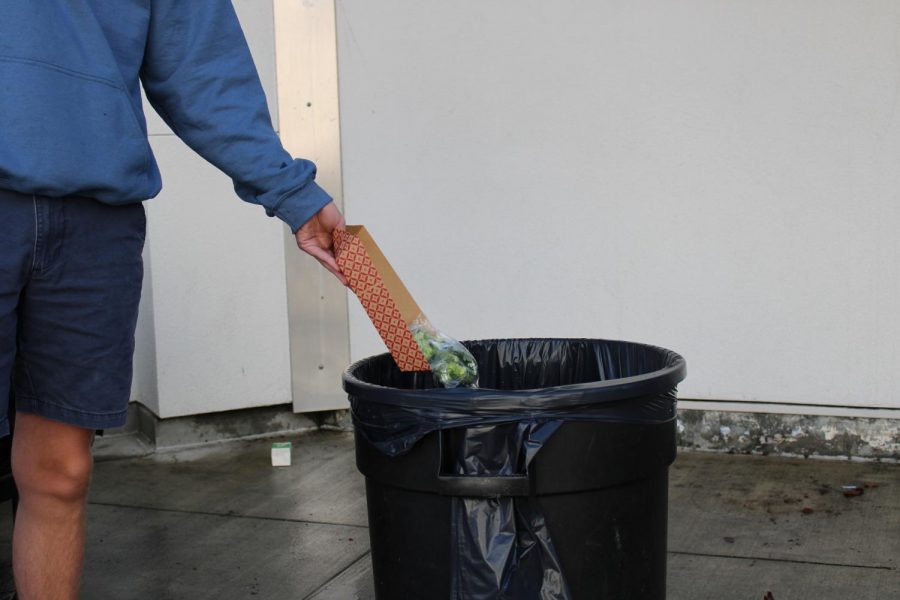Free lunches cause students to waste more uneaten food
Students have been throwing away more of their food in the trash and around campus
A Cal High student throws away vegetables from his lunch after exiting the commons.
The district’s transition from paid to free lunches has helped many students financially, but it is causing schools to see more wasted food in their trash cans.
“Now [students are] not having to pay for it, they get it free, and sometimes they just don’t like what they see,” Cal High campus monitor Tim Ford said.
Before COVID-19, Cal’s school lunch cost $4.75, but the new universal school meals program has made California the first state to offer free lunch to every public school student.
The universal school meals program was part of the landmark state budget agreement Gov. Gavin Newsom signed in June 2021. The program has been more popular than the school expected. On Aug. 11, the first day that Cal served lunch, the school ran out of meals to distribute.
While the introduction of free food has caused an influx of students to get their lunch from the cafeteria, it also has created a noticeable increase in wasted food as many students don’t see the food they receive as worth anything.
“Some kids are taking more than what they should, and if it’s something that they don’t like, they just throw it away,” Cal’s Nutrition Director Elaine Esguerra said.
Every school has to serve grains and fruit or vegetables with brunch and lunch in order for them to count as meals, Esguerra said. But the fruits and vegetables provided are often what students end up throwing in the garbage.
Senior Alex Ren said that lunch ladies force the vegetables on students, which results in students wasting more food that they didn’t want in the first place.
“I come out of the line and there are people immediately throwing all their apples into the trash,” Ren said. “The lunch ladies are forcing the vegetables on the kids. I even heard one say ‘Just take it, throw it away later’, which is absolutely appalling.”
Students are often given a single bag of food for brunch. “[The brunch] bars end up in the garbage more than anything,” Ford said. “It’s supposed to be a healthy thing.”
Custodians are seeing this first hand.
“With the whole free food for everyone thing, there’s twice as much food on the floor,” custodian Ricky Galzao said.
Students have also become disillusioned with the quality of the free lunches.
“Right now everything is packaged and probably mass-made,” senior Dylan Hoang said. “In freshman year they had Subway sandwiches that were just bread, ham, cheese, and it felt better to eat.”
Hoang has been eating school lunch since he first came to Cal and has noticed a decline in the quality of the food because the new options are undesirable. Sides like oven-baked Cheetos and Doritos were replaced with packets of craisins and circular tortilla chips.
“The veggie salads are really dry and they’re not really that heavy either,” sophomore Sachit Ganotra said. “I’m not vegetarian, but I feel like for some people, the very limited options that they have, aren’t sufficient for a lunch.”
San Ramon Valley Unified School District’s new Director of Nutrition Zetta Reicker said the district receives $4.55 for every lunch served and $2.70 for every brunch.
“The per meal reimbursement must pay for staff, food, transportation and any other cost associated with the program,” Reicker wrote in an email.
During the Oct. 26 Den Rep presentation, assistant principal Tucker Farrar addressed this issue of food thrown on the ground around campus. Images were displayed showing spilled milk cartons and food everywhere.
“You’re old enough to know what’s right and wrong,” Esguerra said. “It’s up to the student to say look, this is my trash, I’m going to put it in the garbage.”
Features editor Daphne So contributed to this story.

Senior Anirud Lappathi is part of the social media team for the Californian. This is his second year writing for the paper and he hopes to improve his...

Ryan Syms is a junior at Cal High. He loves to take photos and he is a photographer for the Californian this year.





